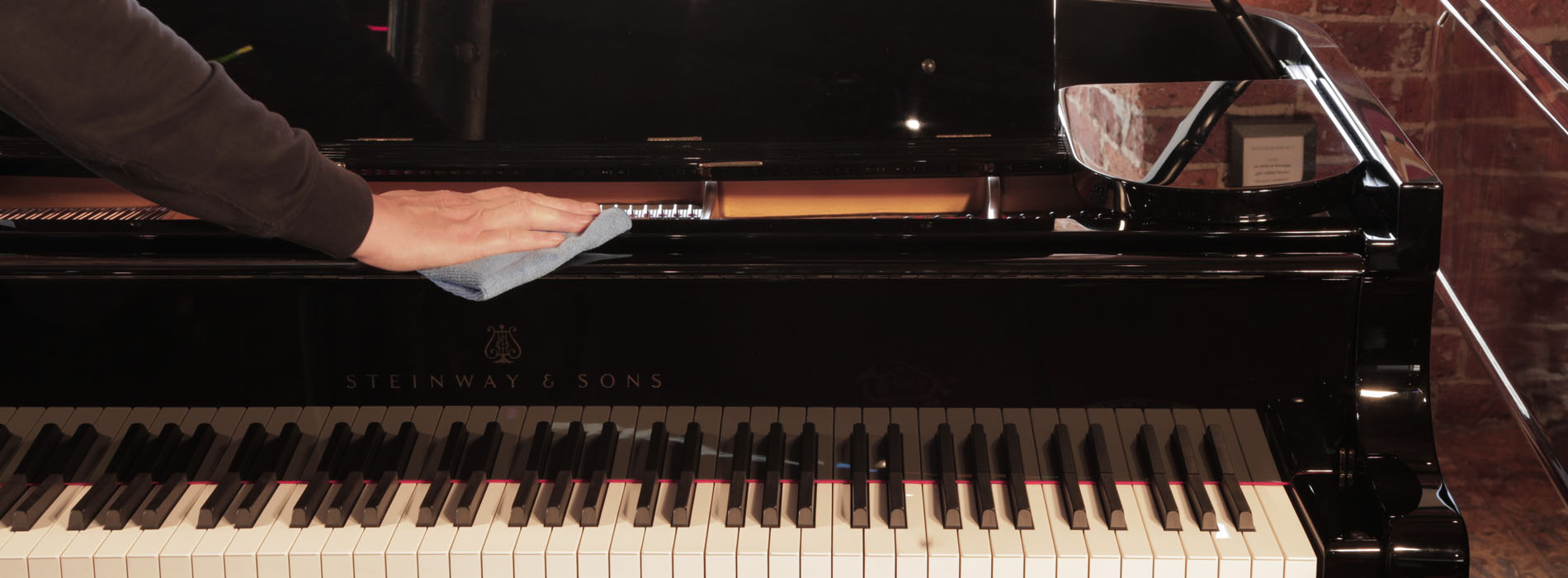How to Clean a Piano at Home: Care and Product Guide
July 28, 2025 by Sophie
If you own a piano – whether it’s an antique upright that’s been in the family for years or a sleek modern grand with a mirror gloss finish – you already know it’s so much more than just an instrument. It's a little bit of magic in the corner of your music space and as such, deserves a bit of TLC to keep it looking its best.
That glorious high gloss finish, so impressive when prisitne, can show off the accumulation of dust, fingerprints, and even the odd greasy smudge from an enthusiastic, post lunch practice session. If you have ever been tempted to reach for the nearest bottle of household spray cleaner, stop right there! A piano cabinet isn’t a coffee table or a kitchen worktop. Underneath that glossy sheen may be a polyester finish that can be delicate if treated the wrong way.
The good news is that caring for your piano cabinet doesn't have to be hard – it’s just about using the right equipment and a bit of patience. With the proper cloths, a few drops of distilled water, the occasional use of diluted, mild soap or piano-specific polish, you can keep your piano looking as stunning as the day it arrived.
In this guide, we’ll take you through the ins and outs of cleaning and caring for your piano at home. These tips will help you keep that beautiful finish sparkling – minimising the risk of scratches or damage.
"Over time and use the high gloss finish can show dust, fingerprints, an odd greasy smudge "
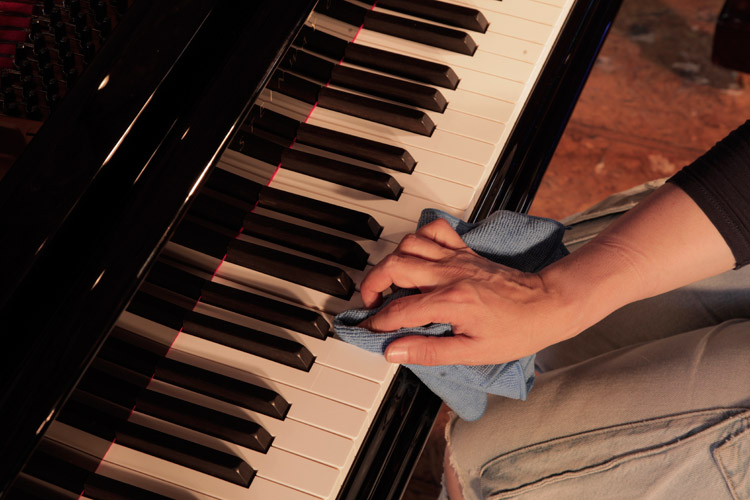
Equipment
Good news! A lot of what you need for day-to-day light cleaning is not specialised kit but readily available from most supermarkets.
Specialist products are also available see links below
What to Use
- Microfibre Cloths high‑quality, lint free
- Distilled Water for damping the cloth before wringing out and wiping the cabinet surface. Distilled water avoids any residue
- Mild Dish / Hand Soap diluted heavily in distilled water. Used for cleaning greasy smudges or grime on the cabinet
- Piano Specific High‑Gloss Polish designed for polyester finishes e.g. Cory Super High‑Gloss Piano Polish
- Furniture Polish designed for wood cabinets e.g. Steinway Supreme Polish
- Compressed air or feather duster to remove loose dust / grit from the cabinet surface
What to Avoid
- Paper towels, old T‑shirts, kitchen sponges, any rough fabrics
to avoid scratching the mirror surface sheen
- Household cleaners with ammonia, alcohol, silicone, lemon oils or waxes
- Applying liquid directly to the piano surface or near the action / strings
- A vacuum head with bristles
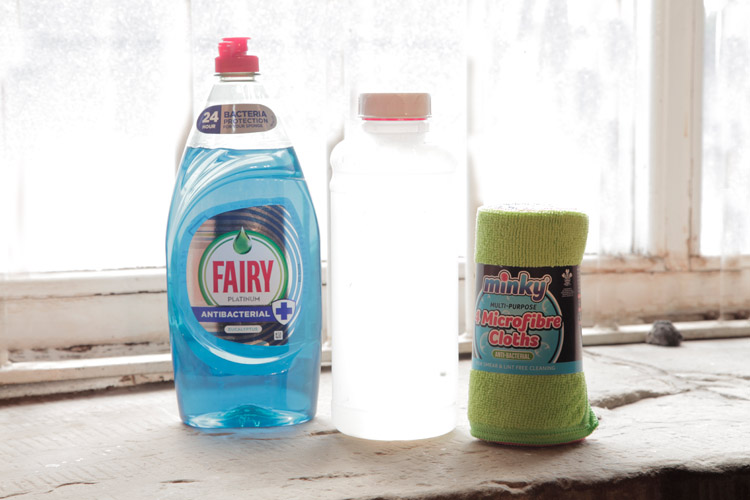
Quick Reference Table
| Task |
Frequency |
Method |
| Dust Removal |
Daily |
Compressed air, feather duster or dry microfiber cloth |
| Light Cleaning |
Weekly / as needed |
Damp microfiber cloth + distilled water |
| Deeper Cleaning |
Weekly / if needed |
Damp microfiber cloth + mild hand / dish soap + distilled water |
| High Gloss Polishing |
2–4 times per year |
Piano-specific high-gloss polish |
| Environmental Care |
Ongoing |
UV protection, humidity control, piano cover
|
1. Dust Removal
Daily
Compressed air / feather duster / dry microfiber cloth
Household dust can be removed using a or a dry microfiber cloth or feather duster. Use compressed air to remove anything gritty from the cabinet. Wiping grit across the mirror surface can cause scratches.
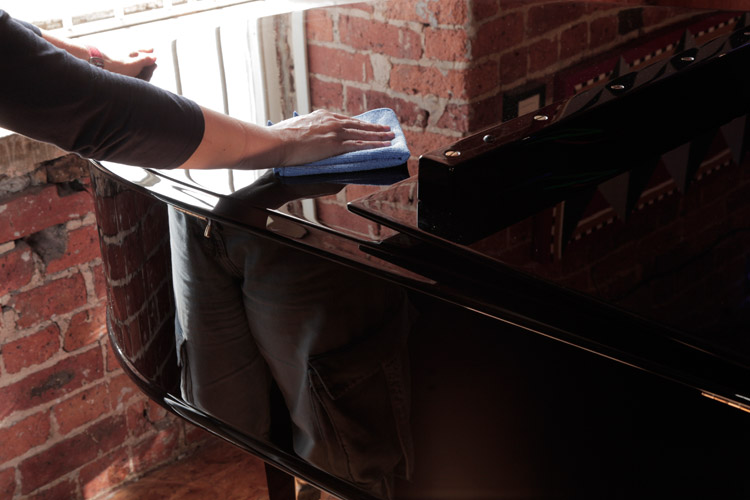
2. Light Cleaning (fingerprints, smudges)
Weekly / As Needed
damp microfibre cloth, distilled water
For use on the cabinet surface or key tops. Dampen a microfibre cloth with distilled water and wring dry. Wipe the cabinet surface in straight strokes instead of circular movements. Immediately wipe dry with a dry microfibre cloth.
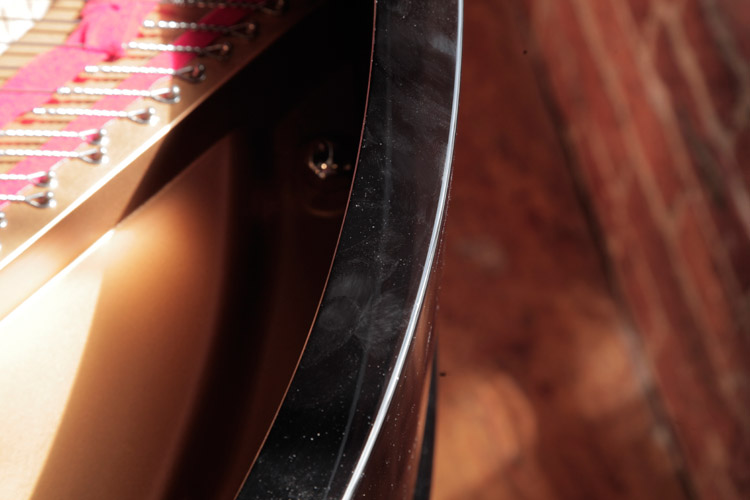
3. Deep Cleaning (stubborn smudges, grease, grime)
Weekly / As Needed
damp microfibre cloth, distilled water, mild hand / dish soap
For use on the cabinet surface or key tops. Add a very dilute amount (1 - 2 drops per litre of water) of hand or dish soap to distilled water. Dampen the microfibre cloth and wring dry before use. Wipe the cabinet surface in straight strokes instead of circular movements. Immediately wipe dry with a dry microfibre cloth.
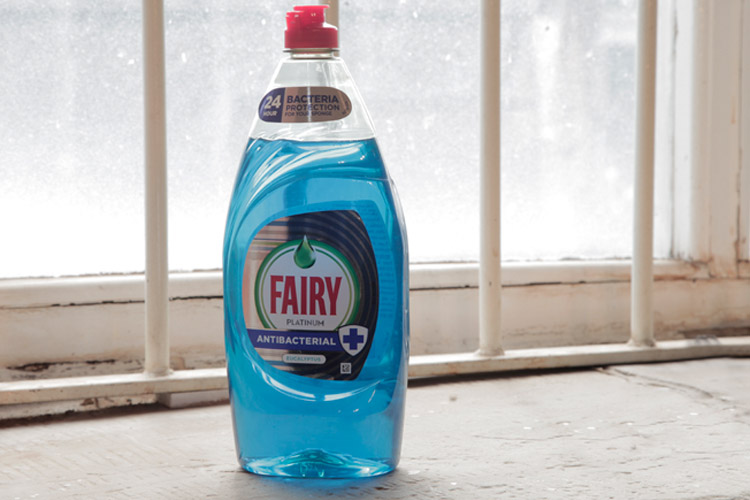
4. High Gloss Polish
2 - 4 times per year
Piano-specific high-gloss polish / dry microfiber cloth
For a high-gloss piano finish, use a polish formulated especially for high gloss polyester finishes on a microfibre cloth. See products listed below.
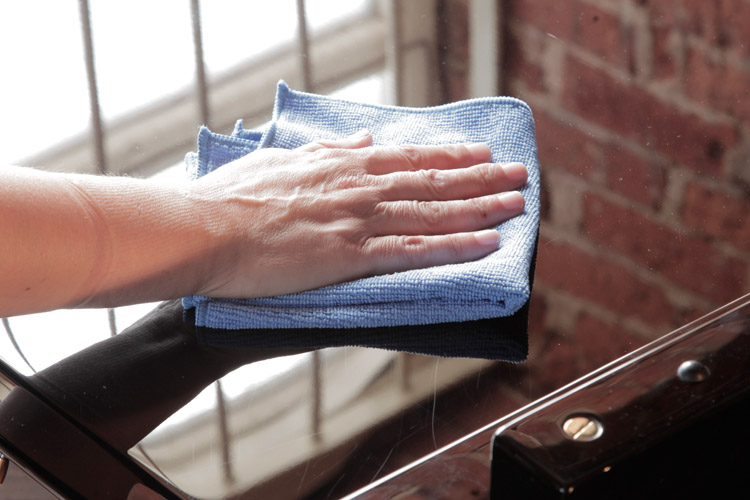
5. Environmental Care
Ongoing
piano covers / dampp chaser systems / hygrometers
- Avoid direct sunlight This can cause yellowing on a finish and fade wooden cabinets. It is best to position a piano away from a window if possible or use curtains
- Maintain stable humidity Stability is key. Range of humidity varies according to geographical location. In the UK a range of 40% - 70% is normal. A hygrometer can be used to guage humidity levels. A Dampp Chaser system can help stabilise levels around a piano's interior (soundboard, action and strings).
- Use a piano cover Covering a piano when not in use avoids dust fall and accidental scratches
- Avoid underfloor heating
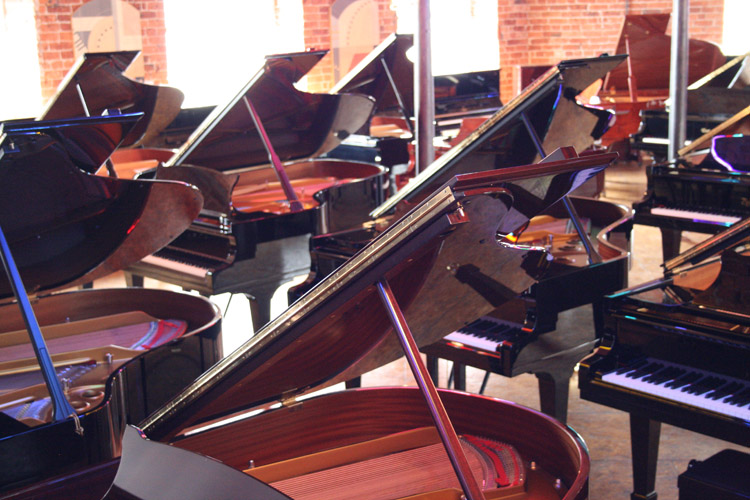
When to call in a professional?
Deep scratches should be handled by a professional piano technician. A professional buffing with specialist products can remove most marks

Piano Cleaning Products Available to Buy in the UK
Follow the links below to specialist products available to buy in the UK

Cory Keybrite Key Cleaner 2oz
£12.95
A product specifically designed for ivory or plastic piano keyboards. Cleans and brightens.
Buy Cory Keybrite Key Cleaner
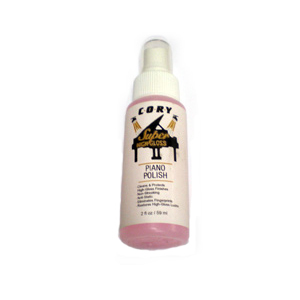
Cory High Gloss Polish 2oz or 4oz
£15.95 or £29.95
A product specifically designed for pianos to protect and polish high gloss polyester finishes.
Buy Cory High Gloss Polish
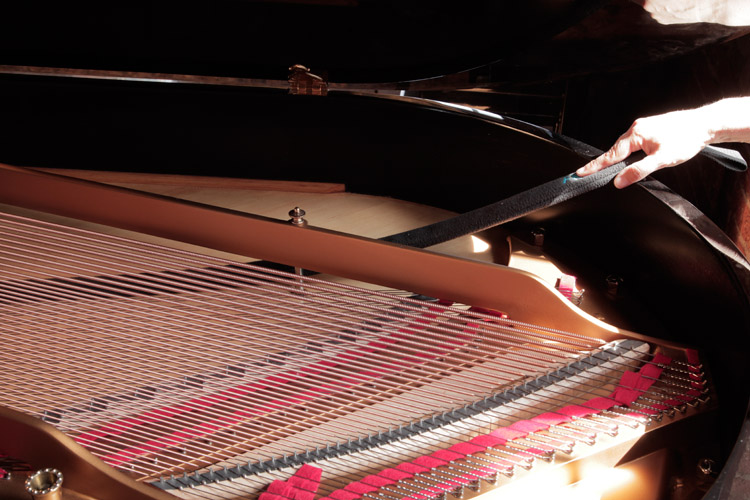
Grand Piano Soundboard Sweeper
£61.95
A duster that sweeps over the soundboard beneath the strings to remove dust.
Buy a Grand Piano Soundboard Sweeper
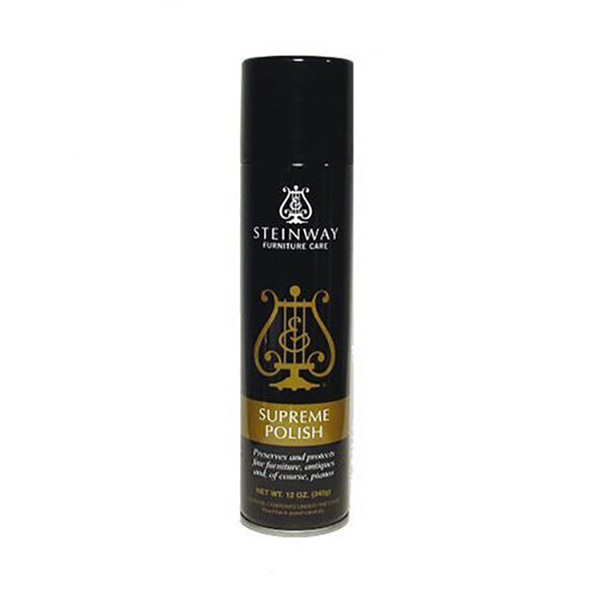
Steinway Supreme Polish 12oz
£14:50
Steinway furniture care. Suitable for all wood finishes.
Buy Steinway Supreme Polish

Digital Hygrometer / Thermometer
£26:95
Easy to operate hygrometer and thermometer in Celsius.
Buy Digital Hygrometer/Thermometer
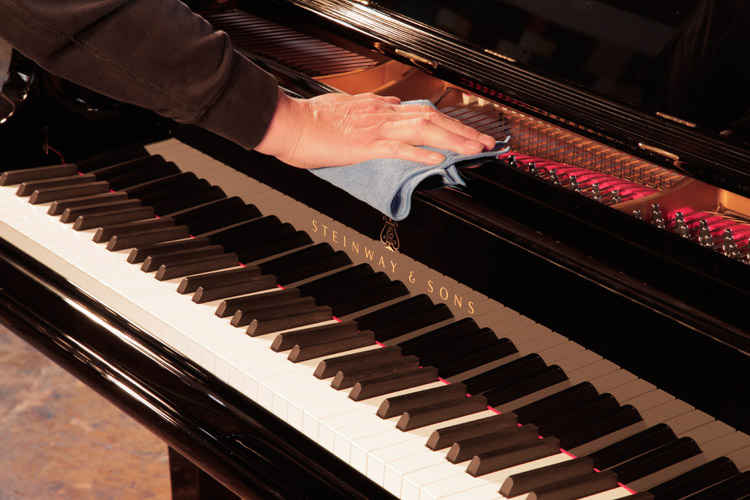
At the end of the day, a piano is so much more than polished wood and shiny keys – it’s a companion to all those hours of music-making. Spend a little time now and then to dust it gently, wipe away the fingerprints, and give it that extra bit of love, because a well-cared-for piano really does sing, even before you touch the keys.

